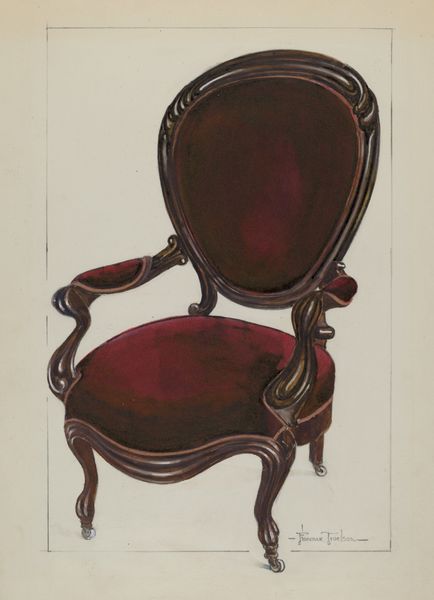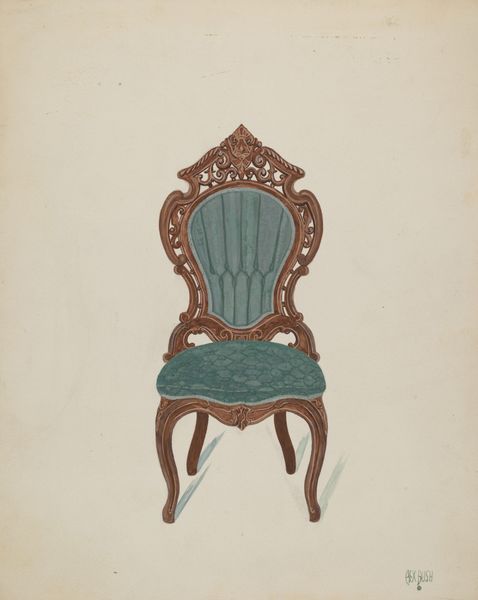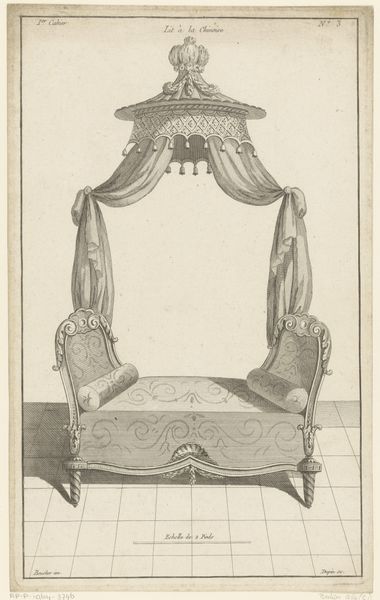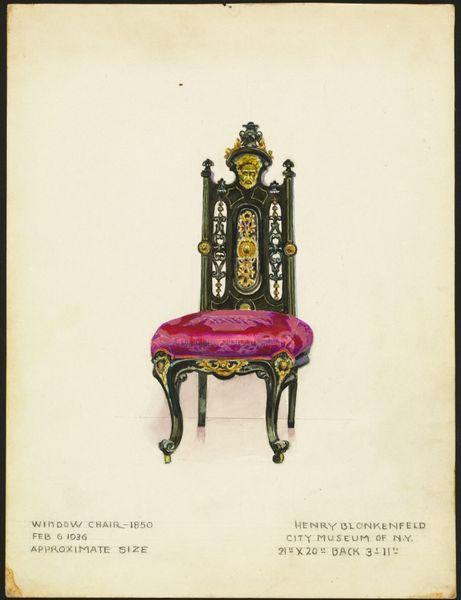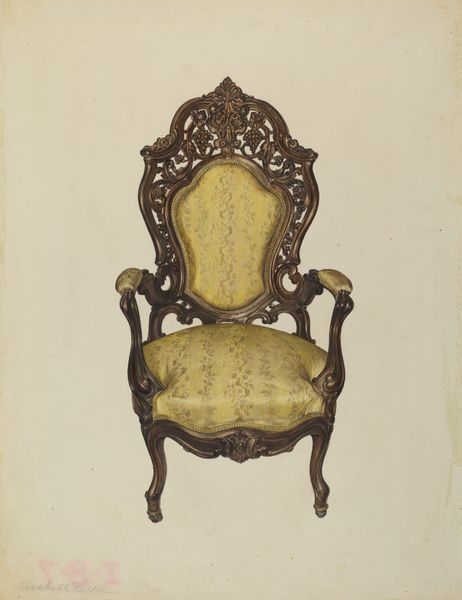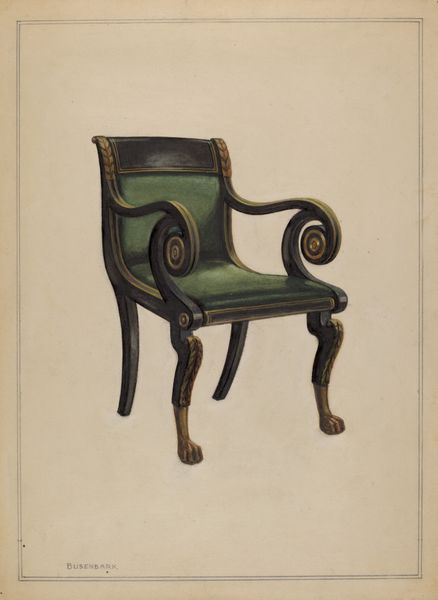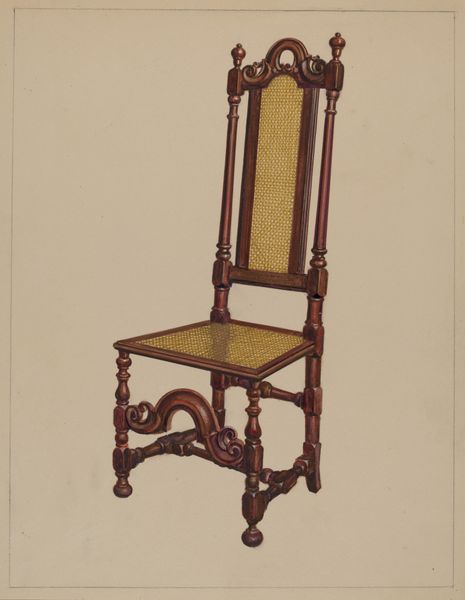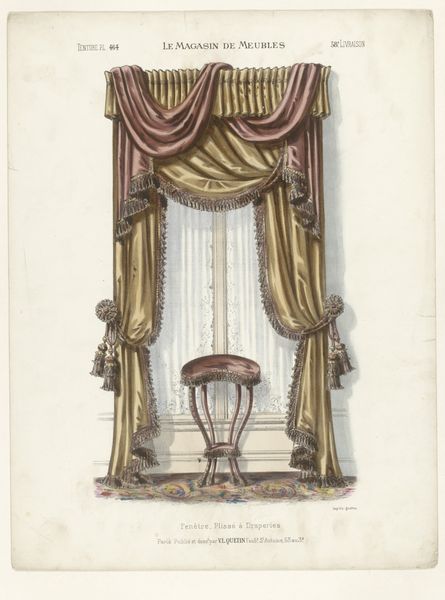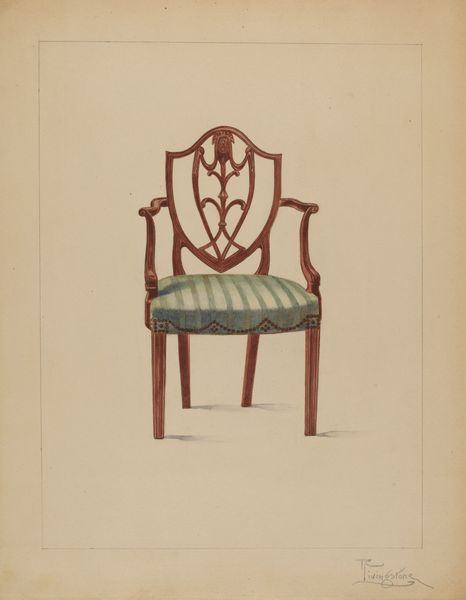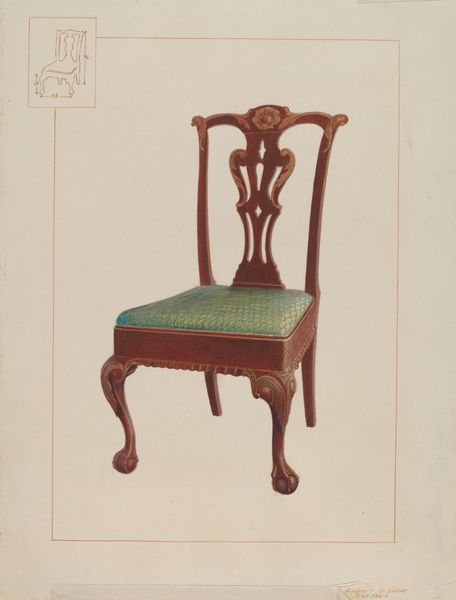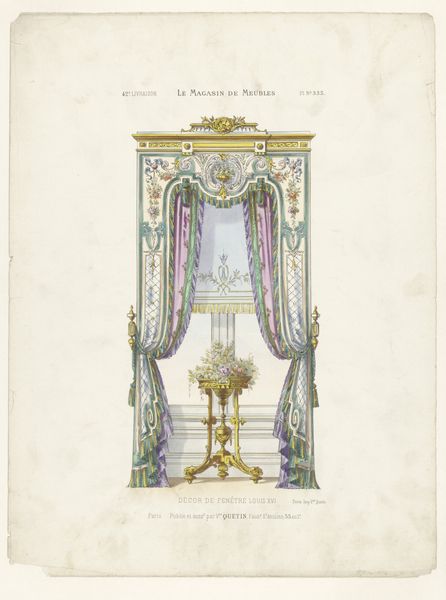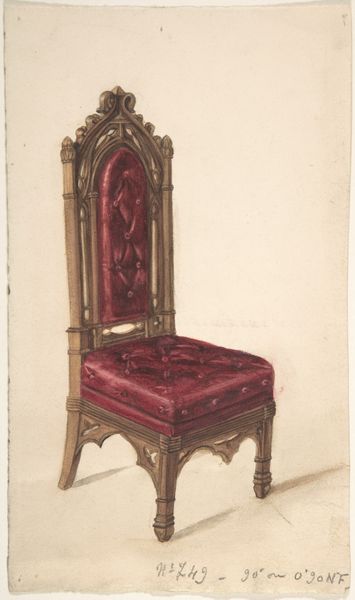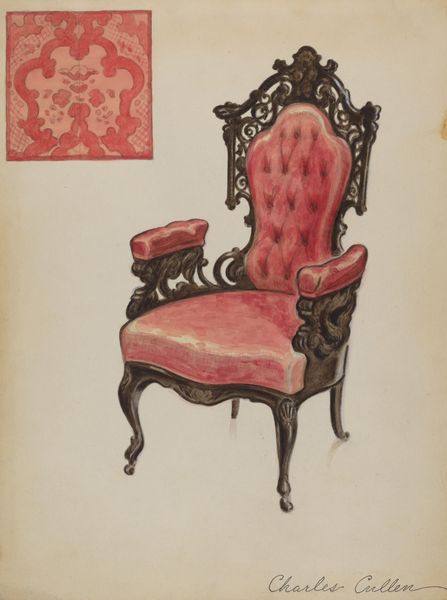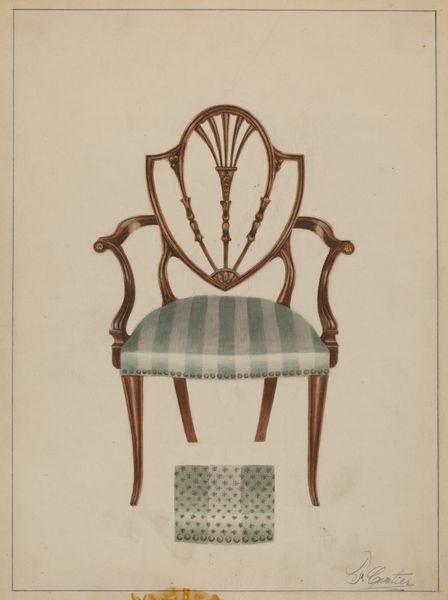
drawing, watercolor, pencil
#
drawing
#
charcoal drawing
#
watercolor
#
pencil
#
watercolour illustration
#
academic-art
#
watercolor
Dimensions: overall: 30.3 x 23 cm (11 15/16 x 9 1/16 in.) Original IAD Object: 17" x 18" x 39 1/2"high
Copyright: National Gallery of Art: CC0 1.0
Curator: Immediately, I am struck by the formality. It feels posed, self-conscious almost. Editor: Today we're looking at a watercolor and pencil drawing by Charles Cullen, circa 1936, entitled "Chair," one of a pair. What interests me is the interplay between functionality and status symbol embedded within this seemingly simple furniture depiction. Curator: I see that. It’s not just any chair; it’s designed to project a certain image, isn't it? There is that air of aristocratic decorum that resonates with bygone power structures, especially if it's a historical replica. I find the stars, too, intriguing! Editor: Yes! And consider how these chairs functioned within specific social settings. The academic-art style lends a timeless quality while raising questions about how we design and perceive the artifacts of domestic life and those who consume the domestic lives. Curator: Looking at it, I wonder about Cullen's motivations. Was he commissioned to meticulously render these objects, reinforcing their prestige, or was it more of a study? Maybe the market economy that sustained it or demanded its destruction. Editor: Precisely! And we can read that further with the rise of mid-century modern furniture in opposition to such older designs of wealth. The contrast, particularly given its time, becomes about what we deem worthy of attention or preservation – Whose domestic visions are privileged? It speaks to social hierarchies encoded in what appears as harmless taste. Curator: I concur! These everyday objects can serve as portals, as material cultural signifiers that tell important stories about identity, history, and aesthetics. What feels most important is questioning why we grant access and validation. Editor: Definitely. Cullen’s artwork becomes a fascinating reminder of the complex web of meanings behind the objects that fill our lives and how what appears a static portrait becomes about what designs survive.
Comments
No comments
Be the first to comment and join the conversation on the ultimate creative platform.
